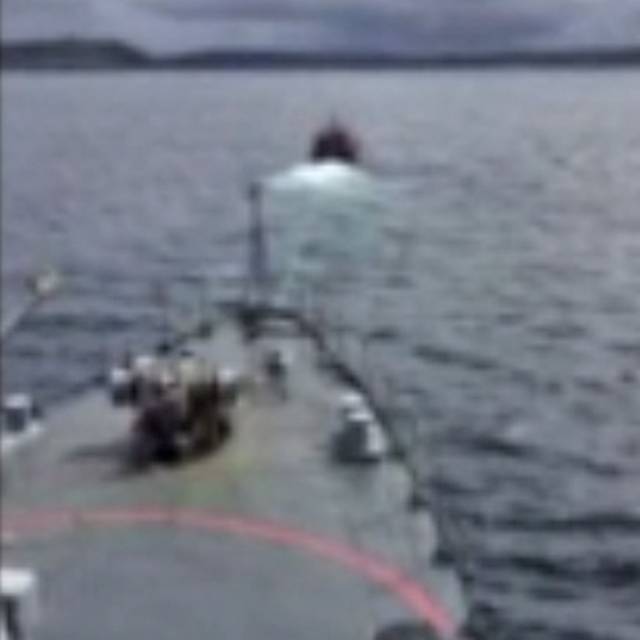#RNLI - An unusual training exercise took place on Sunday (14 August) off the Connemara coastline involving the Naval Service vessel LÉ Orla and the volunteer crews of the Clifden RNLI lifeboats.
In calm conditions, RNLI volunteers and naval crew co-operated on a number of training exercises, beginning with a 'man overboard' scenario, in which the casualty was transferred by hoist from the LÉ Orla to the Mersey class all weather-lifeboat Fishermans Friend.
A RIB from the naval vessel was then recovered in the water and towed by the Atlantic 85 lifeboat helmed by Daniel Whelan with crew John Mullen, Gerry Claffey and Michael Carey.
Next up was a salvage operation exercise, where the lifeboat crew used their salvage pump onboard the Naval vessel which was supposedly adrift at the time.
"It was at this point it occurred to me that as part of a salvage operation we would normally tow the vessel in question," said Clifton RNLI coxswain David Barry, who requested and was granted permission to tow the 750-tonne OPV at 1,500 revs and 3.2 knots.
"Admittedly, conditions were very calm at the time, but we were all really delighted to have been able to successfully carry out a brief tow," he added. "In poorer conditions, we might have been able to at least keep the ship nose to sea.
"Overall, the day's exercises were a huge success for the whole crew and we are really grateful to the Irish Naval Service for facilitating these invaluable exercises."
To round off the exercise session, three Naval Service divers were recovered from the water by both lifeboats.
Since the introduction of the all-weather lifeboat to Clifden, the volunteer crew have undertaken many hours of advanced and innovative exercise scenarios intended to give the crew experience and competence.
































































